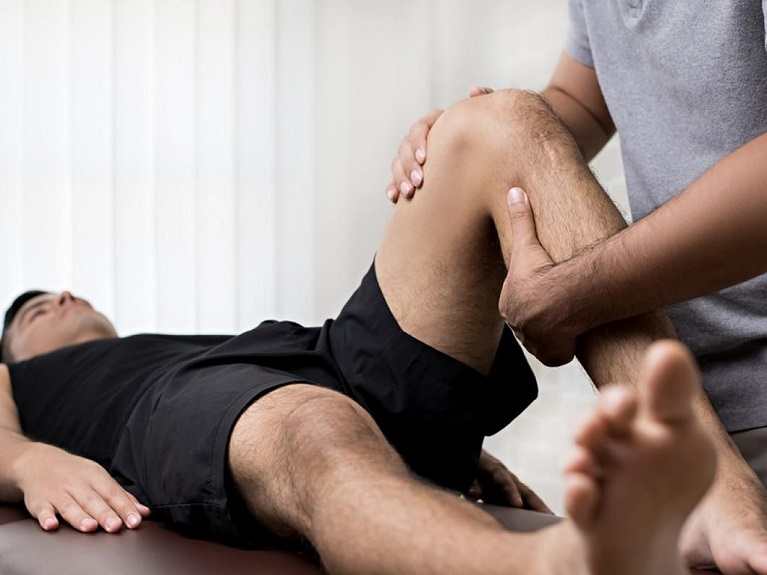Selecting the Right Chiropractor for Your Spine
Wiki Article
Everything About Spinal Decompression: Effective Solutions for Spinal Health and Wellness
Spinal decompression therapy has actually arised as a viable option for those looking for relief from numerous spinal problems. This non-invasive therapy targets the root causes of discomfort, such as herniated discs and chronic pain in the back. Understanding its principles and applications can clarify exactly how it promotes overall spinal health. What are the certain benefits and techniques entailed in spinal decompression? Discovering these concerns might disclose valuable insights for people considering this strategy.Understanding Spinal Decompression Therapy
Just what is spinal decompression treatment, and just how does it function? Spinal decompression treatment is a non-invasive treatment targeted at soothing stress on the spine's nerves and discs. It employs customized devices to carefully stretch the spine, producing adverse pressure within the discs. This unfavorable pressure assists in the repositioning of herniated or protruding discs and urges the influx of important nutrients and fluids into the influenced locations.People normally push a mechanized table that supports the spine while permitting regulated traction. The therapy can target numerous spinal problems, including persistent back sciatic nerve pain, disc, and pain degeneration. Procedure are normally pain-free and can last from 30 to 45 minutes. While numerous patients experience immediate relief, a collection of sessions may be recommended for best outcomes. In general, spinal decompression treatment represents a holistic method to spinal health and wellness, intending to restore feature and promote overall well-being.
The Scientific Research Behind Spinal Decompression
Spinal decompression therapy is grounded in principles of biomechanics and physiological reaction to pressure changes within the spine. This non-invasive therapy intends to alleviate spinal disc pressure, which can add to discomfort and pain. By using grip methods, spinal decompression produces an unfavorable pressure environment within the intervertebral discs. This adverse stress facilitates the repositioning of herniated or protruding discs and advertises the influx of vital nutrients and fluids, aiding in the healing process.Study suggests that spinal decompression can lead to an increase in disc height, which may ease nerve root compression. Chiropractor. The treatment additionally aims to improve spinal placement, potentially enhancing total biomechanical feature. Comprehending these scientific concepts assists practitioners use spinal decompression successfully, guaranteeing that clients receive targeted treatment tailored to their specific spinal problems. Overall, the scientific research behind spinal decompression underscores its importance in the area of spinal health
Advantages of Spinal Decompression
While lots of individuals look for alleviation from chronic pain in the back, the advantages of spinal decompression prolong beyond mere discomfort administration. This therapeutic method help in boosting spinal wellness by promoting proper placement and lowering stress on intervertebral discs. Enhanced blood circulation is one more notable advantage, as spinal decompression facilitates far better blood flow to the spine, nourishing surrounding cells and increasing healing procedures.Furthermore, spinal decompression can result in raised flexibility and improved variety of movement, making it possible for individuals to engage in day-to-day activities with higher ease. Several clients report boosted overall wellness and a decrease in stress levels, as alleviating pain in the back can considerably improve high quality of life.
Spinal decompression might offer as a precautionary action, aiding to avert future spinal issues by maintaining perfect spinal function. Overall, the multifaceted advantages of spinal decompression emphasize its relevance in advertising long-lasting spinal health and health.
Kinds Of Spinal Decompression Methods
Numerous methods exist for spinal decompression, each designed to alleviate pressure on the spine and boost general wellness. One typical approach is mechanical spinal decompression, which makes use of a grip table to delicately stretch the spine, developing unfavorable pressure in the discs. One more strategy is manual spinal decompression, done by a chiropractor, that applies controlled force to alleviate and straighten the spine stress.On top of that, there are non-invasive treatments such as inversion treatment, where people hang inverted to promote spinal elongation. Additionally, exercises that concentrate on strengthening core muscles can add to spinal assistance and decompression.
Some specialists make use of advanced methods like spinal decompression gadgets, which are crafted to provide targeted relief. Each method aims to enhance spinal placement, reduce discomfort, and enhance movement, providing to the unique demands of individuals looking for alleviation from spinal discomfort.
What to Anticipate Throughout a Spinal Decompression Session
During a spinal decompression session, patients can prepare for a collection of preparation actions designed to ensure their convenience and safety and security. The session itself generally includes a combination of therapeutic techniques aimed at reducing stress on the spine. Recognizing these aspects can help people really feel much more comfortable prior to and throughout the therapy.Treatment Preparation Steps
As clients plan for a spine decompression session, they can anticipate a very carefully structured process made to ensure their comfort and safety and security. At first, practitioners will certainly perform a comprehensive analysis, reviewing case history and existing symptoms to tailor the therapy. Clients might be recommended to put on comfy clothing and remove any kind of jewelry that could conflict with the treatment. It's also usual for clinicians to describe the innovation and methods made use of in spinal decompression, guaranteeing people understand the procedure and its benefits. Furthermore, individuals might be instructed to hydrate properly click here prior to the session. This preparation aims to develop a favorable setting for spinal health and wellness, permitting patients to feel safe and educated about their treatment trip.Session Experience Introduction
A spine decompression session generally unravels in a tranquil and controlled setting, where individuals are located pleasantly on a specialized table developed for the procedure. The practitioner starts by describing the procedure, making certain the patient comprehends each step. As soon as settled, gentle grip is put on the spine, producing space in between the vertebrae to reduce pressure on the discs and nerves. Individuals might really feel a moderate stretching experience, however discomfort must be minimal. Sessions typically last about 30 to 45 mins, throughout which the professional checks the individual's response. Afterward, individuals may receive recommendations for follow-up treatment or workouts to boost results. Generally, the experience intends to advertise leisure and recovery, promoting a sense of well-being.That Can Gain From Spinal Decompression?
Who stands to get one of the most from spinal decompression therapy? Individuals experiencing persistent pain in the back, herniated discs, or degenerative disc disease are primary candidates for this therapy. Those experiencing sciatica or pins and needles in the arm or legs may also profit greatly, as spinal decompression can help minimize pressure on the spinal nerves. In enhancement, athletes recovering from injuries or individuals with postural issues usually find relief through this treatment.Additionally, individuals seeking a non-invasive option to surgery for their spinal health concerns may take into consideration spinal decompression as a feasible alternative. It is important for prospective candidates to consult with healthcare professionals to identify the appropriateness of this treatment for their particular problems. In general, spinal decompression treatment can offer substantial advantages for a varied variety of people, enhancing their general high quality of life and promoting far better spinal health.
Tips for Preserving Spinal Health After Therapy
After undergoing spinal decompression therapy, preserving spinal wellness is vital for long-lasting health. Executing routine workout regimens, bearing in mind position, and developing an ergonomic workspace can substantially add to a much healthier spine. These practices not only support healing but also aid avoid future concerns.
Regular Exercise Regimens
Maintaining spinal health adhering to treatment is vital for long-lasting healing and general wellness. Regular exercise routines play a crucial role in this procedure. Involving in low-impact tasks such as swimming, walking, and cycling can assist enhance the muscular tissues sustaining the spine, enhance versatility, and enhance general mobility. Including core-strengthening exercises is particularly beneficial, as they give security and assistance to the spine. Additionally, gentle extending routines can ease stress and promote relaxation in the back muscular tissues. It is very important to consult a healthcare expert prior to starting any type of brand-new workout routine to guarantee it aligns with individual healing goals. Consistency in these tasks cultivates a positive strategy to spinal wellness, aiding in the avoidance of future concerns.Pose Awareness Methods
A strong understanding of pose can significantly influence spinal health during the recovery process. Individuals should knowingly preserve an upright setting, making sure that the head is straightened with the spine and shoulders are loosened up. Regularly examining in with one's pose throughout the day can aid enhance good routines. When sitting, making use of a helpful chair that promotes back support is crucial. Furthermore, representing extended durations needs weight distribution in between both feet and involving the core muscles. Exercising mild stretches and mobility workouts can additionally boost understanding of stance. Mindfulness strategies, such as deep breathing, can assist in recognizing tension and promoting relaxation in the back. Implementing these methods fosters a proactive approach to spinal wellness post-treatment.Ergonomic Work Area Arrangement
While an ergonomic work space might feel like a luxury, it is vital for those recuperating from spinal issues. A well-structured environment can considerably assist in maintaining spinal health. Crucial element include a chair with lumbar assistance, which urges correct pose, and a workdesk elevation that allows arm joints to rest at a 90-degree angle. In addition, computer system screens ought to be at eye level to minimize neck strain. Normal breaks to stand and stretch are vital, as long term sitting can worsen discomfort. Foot rests can likewise enhance blood circulation and lower stress on the lower back. By prioritizing these ergonomic principles, people can create a supportive workspace that promotes recovery and promotes long-term spinal health, eventually improving total efficiency and convenience.Regularly Asked Inquiries
The Length Of Time Does Spinal Decompression Treatment Generally Require To Program Outcomes?
Spinal decompression treatment generally takes a number of weeks to reveal noticeable outcomes. The majority of patients experience renovation within 4 to 6 weeks, relying on private problems and adherence to the advised therapy strategy detailed by health care experts.Exist Any Type Of Negative Effects Connected With Spinal Decompression Treatment?
Spinal decompression therapy may cause moderate adverse effects, such as momentary discomfort, muscle spasms, or pain after treatment. Nevertheless, these symptoms are typically brief and solve rapidly, permitting people to continue their therapy efficiently.Can Spinal Decompression Treatment Be Done in the house?

Is Spinal Decompression Safe for Expecting Women?
Spinal decompression is usually thought about unsafe for expecting females due to prospective dangers. It is crucial for pregnant mommies to consult healthcare experts before undergoing any spinal therapies to guarantee the security of both mommy and child.How Frequently Should I Undertake Spinal Decompression Therapy for Ideal Outcomes?
Typically, individuals need to undergo spinal decompression treatment 2 to three times a week for ideal outcomes. The regularity may vary based on individual problems and must be figured out by a healthcare professional.Spinal decompression therapy is grounded in concepts of biomechanics and physical reaction to pressure changes within the spinal column. Comprehending these scientific principles helps specialists use spinal decompression successfully, making sure that people get targeted treatment tailored to their specific spinal problems. Spinal decompression may serve as a precautionary procedure, aiding to prevent future spinal issues by maintaining optimal spinal feature. Individuals seeking a non-invasive choice to surgical procedure for their spinal health concerns may think about spinal decompression as a sensible alternative. After undertaking spinal decompression treatment, keeping spinal health and wellness is crucial for lasting well-being.
Report this wiki page